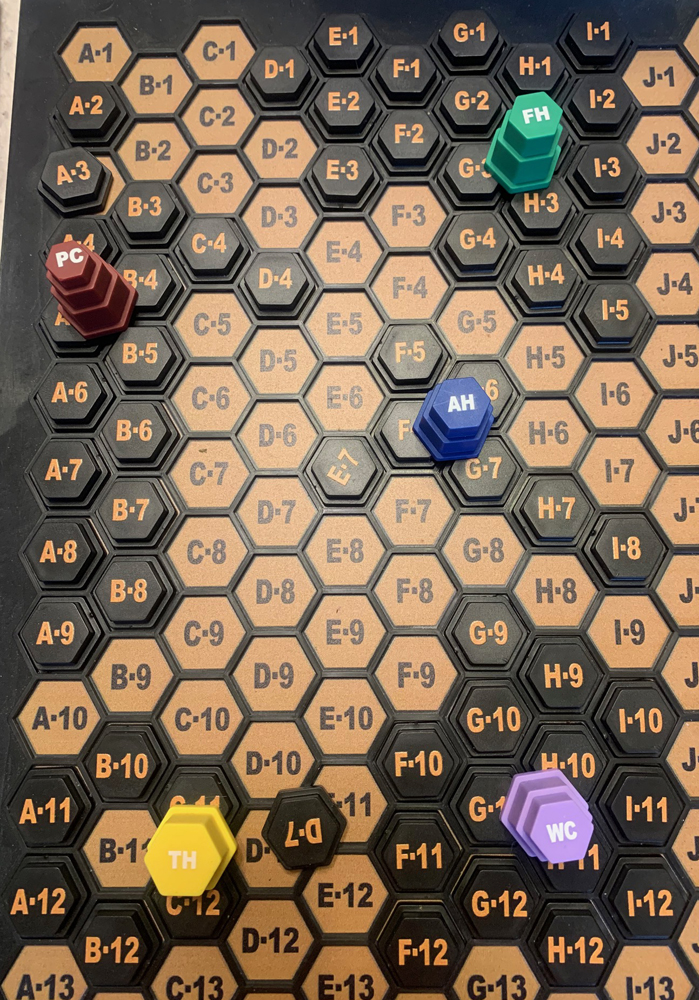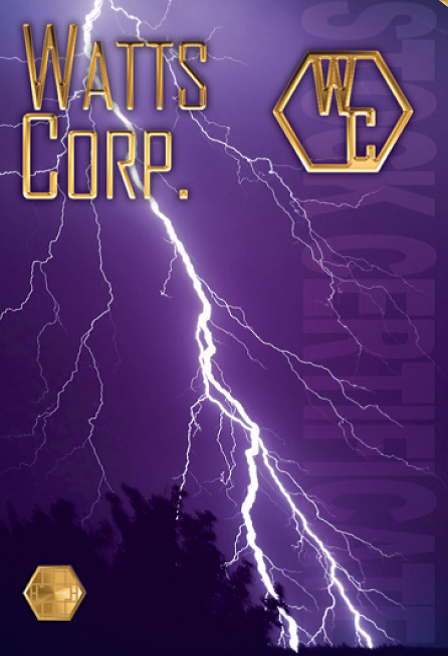MEGAcquire GOLD is the high finance board game of buying, selling, and trading stocks to become the wealthiest player. Build and merge companies while attempting to gain majority stock interest. Live in the world of fun and fortune as you maneuver to outwit your opponents with skill and a little luck.
MEGAcquire GOLD Condensed Version is designed for those who desperately want to play a game of MEGAcquire GOLD, but just don’t have the time to play a full game. A condensed game of MEGAcquire GOLD can be completed in less than an hour and a half because you are utilizing only 108 spaces on the MEGAcquire game board, plus you are only playing with (7) hotels/companies. With this condensed version, you have all the excitement of MEGAcquire, but in a compact, quicker game.
To play the MEGAcquire GOLD Condensed Version you will need the following:
(1) MEGAcquire Game Board (Only the left section of the board will be used with hexagons designated from A-1 to I-12.)
(108) Corresponding Hexagon Tiles
(175) Stock Certificates that include the following (7) hotels/companies:
- (25) Physics - Burgundy
- (25) Krause - Teal
- (25) Fanfare – Green
- (25) Arcadia – Blue
- (25) Watts - Purple
- (25) Teton – Yellow
- (25) Solon - Gray
(7) Corresponding Colored Hotel/Company Buildings
(150) Debit Cards that include the following currency:
- (25) $1M Debit Cards
- (25) $5M Debit Cards
- (60) $10M Debit Cards
- (40) $50M Debit Cards
(6) Tile Holders
(1) Tile Bag
(6) Information Cards
(1) Set of Instructions
Rules for Playing a Condensed Game of MEGAcquire GOLD:
There are occasions when time constraints don’t permit the ability to play an entire game of MEGAcquire GOLD. The original rules simply state to set a shorter time limit but there are instances where that scenario spreads the companies at the corners of the board and there is minimal merging in the time allotted.
This game will utilize spaces A-1 thru I-12 along with the corresponding hexagon tiles. All the other tiles need to be placed back in the game box and only tiles A-1 thru I-12 should be in the tile bag. This condensed game will utilize a mixture of (7) hotels/companies that are listed above. Put the stock certificates and the hotel/company markers from the other (7) hotels/companies that will not be used back in the box.
The hotels/companies chosen for this condensed game will have the same values as they have in a regular game, and therefore, the same Information Cards can be used. The amount of Debit Cards needed for this condensed game are listed above, but it is not necessary to separate them out.
Goal:
The main objective of MEGAcquire GOLD is to become the wealthiest player at the end of the game. This is done by forming companies and obtaining stock, while shrewdly buying and trading the right stock at the right time. Merging companies to obtain capital and adding tiles to the companies in which you have stock to increase their value.
Setup:
Put the game board in the center of the table with the tiles face down in either the top or bottom of the box. An easy alternative is to just leave the tiles in the bag, which can be shaken before each player draws a tile.
Designate a “banker” and a “stock broker” to handle distribution of money and stock certificates (if desired).
The banker will distribute $60M to each player and then keep the rest of the money near them in four piles.
To determine who goes first, each player draws one of the tiles and places it on the board. The player whose tile is closest to “A-1” goes first. (The progression of tiles goes A-1 thru A-12 and then B-1 thru B-12, therefore, A-12 is closer to A-1 than B-1 is.) After determining who goes first, the tiles are mixed back into the pile or bag of tiles.
All players draw (6) tiles, which they will keep in front of them concealed from the other players. After the first player has played their turn, the play will progress clockwise to the left of the first player.
Turn Summary:
Play a tile on the game board onto its matching space.
Buy or trade stocks in any active company. No more than three individual Stock Certificates can be purchased or obtained through trade in one turn.
Buying Stock: A player can buy up to three individual stock certificates from active companies.
Stock prices are determined as follows:
Find the name of the company on the information card for which stock is being purchased. Refer down the appropriate column to find the tile size of the company. Cross-reference that to the stock price column for the cost per certificate.
Each company has 25 Stock Certificates. Once those certificates are gone, there will be no more available to be purchased (unless stocks are returned back to the broker through a sale after a merger or through trade).
How to handle the disclosure of stocks held by individual players must be determined before game play begins. There are four different methods that can be chosen:
1) No disclosure of stock amounts during regular game play. Players keep track by memory.
2) Bank discloses stock amounts left.
3) Players disclose stock amounts on hand.
4) Total disclosure of stock amounts.
Trading Stock: A player on their turn may trade a Stock Certificate for a different Stock Certificate ONLY if they do not have enough money to purchase the stock they want to buy. They can only trade the amount of stock it takes to raise the funds needed to make the purchase of up to three stocks. If the monetary trade is not exactly even, the player is allowed to get a small amount of change. If the cash value of the change is more than one of the shares being used in the trade, then the player must keep that share instead of receiving cash.
Example: If a person has stock in Physics and the company has (3) tiles, the stock is worth $5M for each share traded. The person wants to purchase (3) shares of Solon that has 41 tiles for $10M for each share. The person could trade (6) shares of Physics for (3) shares of Solon.
A player can trade as many shares as they wish in one turn, but they can only obtain three shares.
Finish the turn by drawing one tile from the supply to replace the tile that was just played. Players should always have 6 tiles in front of them.
Game Play:
Playing a tile – Depending on how a tile is played, one of four things can happen:
1) The tile is not adjacent to other tiles and is “unincorporated”. (The hexagon shape of the tiles allows for connection to any tile that is adjacent in every direction.)
2) The tile is adjacent to another unincorporated tile and forms a company. (If all of a player’s tiles would form new companies, but all companies are already on the board with none available to be formed, then that player does not play a tile and does not draw a new one. The player is still allowed to purchase stock.)
When a company is formed the player selects an available companies building from the tray and places it on any one of the new companies’ tiles on the board. The player gets one free stock certificate for founding the company. (If players hold all the stocks, then the founding player gets the “founding bonus” in cash payment that is equal to the companies’ value at time of opening.)
3) The tile is adjacent to an existing company, in which case the company grows in size by one tile and its stock increases in value according to the stock value chart.
A company that has 11 tiles or more in size is “safe”. A safe company can absorb a smaller company through merger, but can never be absorbed itself.
A tile cannot be placed in a location that would cause two safe companies to merge. Such a tile is turned upside down and placed on the board in the proper location. The player draws another tile to replace that tile. (If a player has a tile that will cause two safe companies to merge, they may turn it over immediately, whether it is their turn or not, and draw a replacement tile.)
4) The tile is placed adjacent to two (or more) existing companies. In this case the two companies merge.
Count the number of tiles in each company. (Do not include the merging tile in the count for either.)
The larger company always absorbs the smaller company. If merging companies are the same size, then it is the Merge Maker who decides the fate of these same size companies.
If a tile is placed that merges more than two companies, the larger one survives and the smaller ones become defunct. The companies are absorbed one at a time from smallest to largest.
Remove the colored building from the defunt company(s) and return it to the tray.
All players reveal how many stock certificates they hold in the now defunct company. The player with the most becomes the “Majority Stockholder” while the player with the next most becomes the “Minority Stockholder”.
The Majority Stockholder receives the bonus indicated on the information card in the 1st Majority column. Cross-reference the number of tiles in the defunct company and type of company (small, medium, large). The Minority stockholder receives the bonus indicated in the next column to the right.
If one player is the sole stockholder in a company, that player gets both bonuses.
If there is a tie for Majority Stockholder, add the majority and minority bonus and divide evenly between the two players who are tied. (No other players are paid.) If the bonuses do not divide equally into even $1M amounts, then the bonus is rounded up to the next $1M amount.
If there is a tie for Minority Stockholder, split the Minority Stockholder bonus among those who are tied.
Players must now decide what to do with their defunct stock. Starting with the player who holds majority, and proceeding with the next largest stock holder, the players may:
Hold – The player can keep the stock certificates from the defunct company anticipating that it will be founded again.
Sell – The player can sell their stock certificates back to the bank for the market value of the company directly before the merger.
Player can use any combination of both options. (i.e. if a player has 10 shares, they can Sell 7 and Hold 3, etc.)
The merge maker is the only player able to acquire stock, as is the normal course for a turn.
Ending the Game:
The game ends when all disputed borders are resolved or when all the safe companies left on the board can no longer benefit from growth. After all disputed borders are resolved, place the remaining tiles on the board. Remove the “turnover tiles” between the companies and count the tiles for each company, starting with the smallest.
Players can also decide to end the game early due to time constraints. When the decision is made to end the game, all players should be in agreement, and the last player to play in the first round of the game should be the last player to play in the last round.
Majority and Minority bonuses are paid out in the surviving active companies at the market rate. All stocks in the surviving active companies are sold back at their market price. The player with the most cash wins.
Videos on How to Play MEGAcquire
Lloyd's Rules for Two-Player MEGAcquire












